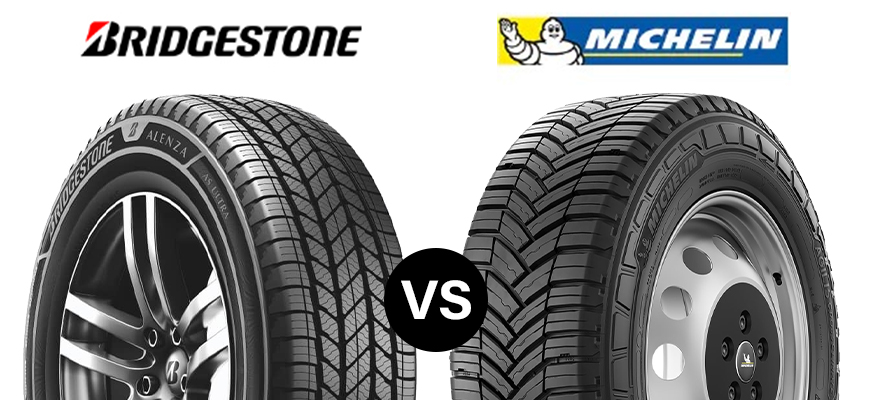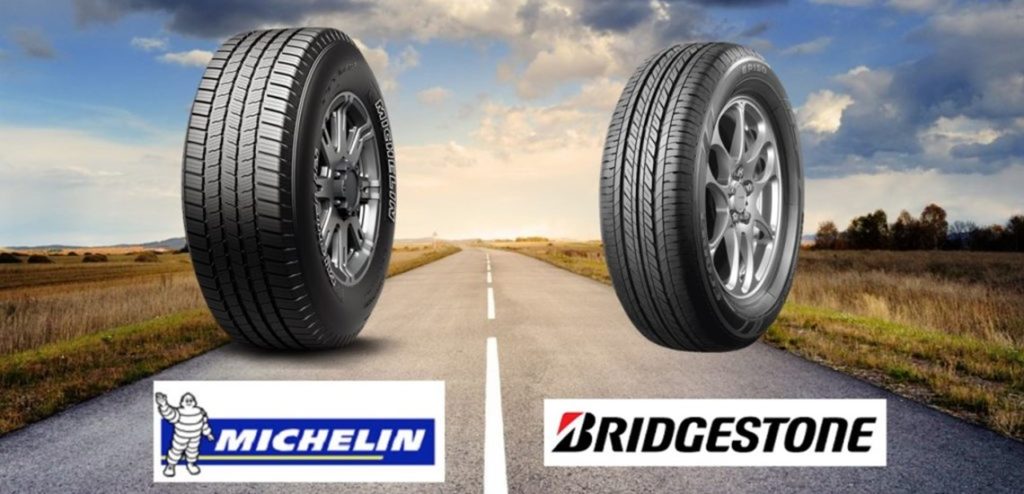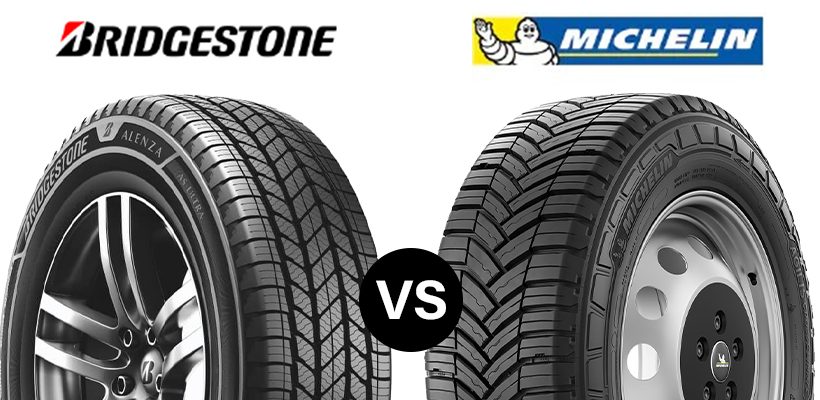
The tire industry is defined by innovation, precision engineering, and the pursuit of optimal performance across varying driving conditions. Among the most dominant players in this space, Bridgestone and Michelin have established themselves as leaders through decades of research, technological advancements, and consistent quality. This comparative analysis evaluates the history, engineering advancements, performance metrics, durability, and consumer considerations associated with Bridgestone and Michelin to provide a data-driven perspective on their respective strengths.
Corporate History and Market Influence
Bridgestone: Japanese Precision and Innovation
Founded in 1931 by Shojiro Ishibashi, Bridgestone has evolved into a global powerhouse in the tire manufacturing sector. With an emphasis on technological advancements and diversified applications, Bridgestone has developed cutting-edge solutions across consumer vehicles, motorsports, and commercial fleets. The brand’s foray into Formula 1 and endurance racing underscores its commitment to high-performance applications, while its continued investments in sustainability initiatives further highlight its adaptability to evolving market demands.
Michelin: French Engineering and Performance Leadership
Michelin, established in 1889, has been a pioneer in tire technology, notably introducing the radial tire, a fundamental innovation that transformed the automotive industry. The company has maintained a competitive edge through rigorous research and development, optimizing tire efficiency, longevity, and environmental sustainability. Michelin’s presence in endurance racing, particularly the 24 Hours of Le Mans, is a testament to its engineering prowess and commitment to tire durability under extreme conditions.
Technological Innovations: Comparative Engineering Advancements
Bridgestone and Michelin prioritize research-driven product development, integrating proprietary technologies to enhance tire performance across multiple parameters. Below is a breakdown of their respective engineering advancements:
Bridgestone’s Technological Contributions
- Run-Flat Technology (RFT): A safety-oriented design enabling vehicles to continue operating for a limited distance post-puncture, reducing roadside assistance dependency.
- Ologic Technology: Optimized aerodynamics through larger diameter and narrower tread width, reducing rolling resistance and enhancing fuel efficiency.
- Turanza & Potenza Series: Designed for luxury and high-performance applications, incorporating advanced silica compounds for enhanced grip and responsive handling.
- Ecopia Series: Engineered for fuel efficiency, leveraging low rolling resistance technology to minimize CO₂ emissions.
- Blizzak Winter Compound: Micro-textured tread patterns designed for superior traction on ice and snow, making it a leader in winter tire performance.
Michelin’s Engineering Breakthroughs
- EverGrip Technology: Expands water evacuation channels as the tire wears, ensuring sustained wet traction and hydroplaning resistance over the product lifecycle.
- Green X Technology: A sustainability-driven approach optimizing rubber compounds to reduce fuel consumption and improve tread longevity.
- Pilot Sport Series: Tailored for high-performance and motorsport applications, featuring asymmetric tread patterns for enhanced cornering stability and grip.
- Primacy Series: Developed for enhanced ride comfort, noise reduction, and extended tread life, ideal for long-distance highway travel.
- X-Ice Winter Engineering: Adaptive tread compounds designed for sub-zero temperatures, delivering industry-leading performance in extreme winter conditions.
Performance Metrics and Driving Experience
Performance evaluation is a critical aspect of tire selection, influencing driving stability, responsiveness, and safety. The following analysis examines how Bridgestone and Michelin compare across key performance parameters:
Dry Road Performance
- Michelin: Offers superior lateral grip and precise handling, particularly in ultra-high-performance (UHP) applications such as the Pilot Sport series.
- Bridgestone: Demonstrates robust dry traction, especially in the Potenza lineup, though Michelin edges out in extreme performance scenarios.
- Conclusion: For high-speed maneuverability and sports driving applications, Michelin retains a slight advantage in overall dry surface grip and responsiveness.
Wet Traction and Hydroplaning Resistance
- Michelin: EverGrip technology provides exceptional wet-weather braking, maintaining stability as tread depth decreases.
- Bridgestone: Features hydroplaning-resistant tread designs in the Turanza and Ecopia series, though Michelin’s proprietary innovations offer more sustained wet-weather reliability.
- Conclusion: Both brands excel in wet traction, but Michelin’s engineered self-regenerating tread patterns offer a marginally higher degree of safety in prolonged use.

Ride Comfort and Noise Reduction
- Michelin: The Primacy and Defender series are optimized for noise absorption and shock dispersion, resulting in a quieter, smoother ride.
- Bridgestone: The Turanza lineup focuses on comfort but may exhibit slightly more road noise compared to Michelin’s noise-dampening technologies.
- Conclusion: Michelin demonstrates a stronger emphasis on comfort-centric engineering, making it the preferred choice for long-haul travel.
Winter and Snow Performance
- Bridgestone: The Blizzak series remains one of the highest-rated winter tire lines, excelling in deep snow traction and ice grip.
- Michelin: The X-Ice series offers competitive cold-weather performance but emphasizes tread longevity alongside winter capability.
- Conclusion: While both brands deliver premium winter tire solutions, Bridgestone’s Blizzak lineup is often preferred in extreme snow and ice conditions.
Durability and Tread Longevity
Long-term value is a defining factor in tire selection, as superior tread life equates to cost savings and sustained performance:
- Michelin: Industry-leading treadwear warranties and advanced silica-infused compounds contribute to extended lifespan and wear resistance.
- Bridgestone: Produces durable tire models, though certain performance-focused variants may experience slightly faster tread degradation.
- Conclusion: Michelin maintains a competitive advantage in longevity, often offering mileage warranties surpassing Bridgestone’s comparable models.
Economic Considerations: Pricing and Long-Term Value
Pricing dynamics are influenced by performance tier, durability, and technological investments:
- Michelin: Premium pricing structure justified by superior tread longevity, efficiency, and performance across multiple conditions.
- Bridgestone: More budget-friendly in certain segments, with competitive performance-focused tires at lower price points.
- Conclusion: Michelin presents a higher initial cost but delivers long-term savings through extended tread life and fuel efficiency advantages.
Consumer Satisfaction and Market Reputation
User experience and industry evaluations provide valuable insights into brand reliability:
- Michelin: Consistently ranked at the top in consumer satisfaction surveys and independent performance tests.
- Bridgestone: Strong reputation, particularly in high-performance and winter tire categories, though Michelin maintains a higher customer loyalty rate.
- Conclusion: Michelin edges out in overall consumer trust, but Bridgestone remains highly regarded in specific performance segments.
Final Verdict: Which Brand Aligns with Your Driving Needs?
The optimal tire selection depends on individual driving conditions, performance expectations, and economic considerations:
- Michelin is ideal for drivers prioritizing:
- Extended tread life and fuel efficiency.
- Consistent high-performance handling across varying conditions.
- Premium ride comfort and noise reduction.
- Bridgestone is better suited for:
- High-performance sports driving at a lower cost.
- Extreme winter conditions requiring superior snow and ice traction.
- Budget-conscious consumers seeking competitive performance alternatives.
Final Recommendation:
While both brands represent the pinnacle of tire engineering, Michelin stands out in longevity, efficiency, and all-season adaptability, whereas Bridgestone offers compelling value in high-performance and winter tire segments. The final decision should be based on the specific application, budget, and driving environment.
